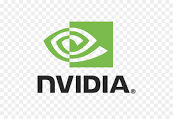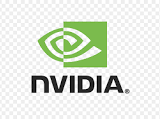
Two stars in the automobile sky – danger for Tesla?
28. Juni 2020Two stars in the automobile sky – danger for Tesla?
By Horst Buchwald, 28.6.2020
Last week the balance of power in the global automobile market changed. Because of Corona, many motorists overlooked this.
The main players were: Tesla, NVIDIA and Mercedes.
What was going on there?
J.D. Power made the opening. It wasn’t the first time that the market analysis experts had investigated the number of defects in new cars in the USA. This included vehicles from 32 brands sold in the USA. The result was a hammer: Tesla came in last – for no other car brand do new car owners report so many defects.
The news channel CNBC got right behind it and asked owners of a new Tesla. Do you have problems? Yes, there were complaints mainly about paint defects and poorly fitting body parts or uneven gaps. The trunk lids were often difficult to open and close. Many Tesla drivers reported loud wind noises. In addition, Tesla vehicles often squeaked and rattled. Other customers also complained that the range was lower than expected or that the range was displayed incorrectly.
The J.D. Power’s 2020 Initial Quality Study recorded defects discovered by owners during the first 90 days after delivery of the vehicles. The comparison is based on the average number of defects per 100 vehicles of a brand. On average, new car owners reported 166 problems per 100 vehicles. Tesla, however, achieved a value of 250 problems per 100 vehicles. Dodge and Kia performed best with 136 problems per 100 cars each.
However, Tesla is not officially participating in the study because the car manufacturer did not allow J.D. Power access to customer data in 15 US states. J.D. Power said it was nevertheless able to contact around 1250 Tesla owners in 35 other US states and evaluate their experiences for the study. Most of the Tesla customers surveyed drive a Model 3.
The study by J.D. Power is regarded in the industry as a benchmark for quality. The less technology in a brand’s vehicles, the better they generally score in the survey, as there are fewer problems to report, according to Dave Sargent, J.D. Power’s vice president of automotive quality.
But analysts admit that Tesla’s problems are somewhat different from „traditional“ car brands. Almost a quarter of all problems cited by new car owners are related to infotainment. The most common complaints are about integrated speech recognition, Android Auto/Apple CarPlay connectivity, touch screens, integrated navigation systems and Bluetooth connectivity.
Additional bad luck for Tesla: J.D. Power’s study came out just hours after U.S. security authorities released an investigation of Tesla Model S vehicles built between 2012 and 2015 showing failures of the car’s large touch screens.
NVIDIA and Mercedes – two new stars in the automotive sky?
Watch out: „A bang in the car sector,“ was the word on the stock markets. Chip giant Nvidia had received a major order from Daimler for its AI robot car system. From 2024, the Nvidia architecture will be installed in every new Mercedes. This would not only enable autonomous driving on level 4 and independent parking. The car of the future will become a kind of iPhone, which will constantly receive software updates. Thanks to the advances „at the speed of light“ in artificial intelligence, the system is constantly improving, according to Nvidia.
In the future, the entire car will be developed on the basis of AI from the very beginning. „This is the largest partnership of its kind in the car business to date,“ said Nvidia CEO Jensen Huang. And he didn’t spare any tips against pioneer Tesla, who presents himself as a leader in this field. But he warns: „Never before has there been so much computing power in a car“.
After Tesla presented a chip with 144 TOPS (trillion operations per second) a year ago, Nvidia addressed an unprecedented 2,000 TOPS on its keynote – more than six times as much as the previous Nvidia chip.
„Breakthrough for Nvidia“ in the automotive industry?
The deal is huge, the stock market said again. This time it was Jeffries. They had already calculated that the Daimler contract would add another 5.5 billion dollars a year to Nvidia’s cash box. The mega-market for robot car chips is only just beginning to grow: from five billion dollars today to up to 700 billion dollars as soon as 100 million cars are made fit for the future. So that could still take some time. Nevertheless, some people acting as „insiders“ claimed: „This is a breakthrough for Nvidia and opens up a business model with recurring revenues in the future market of digital cars. Reasoning: A big advantage of the system is the possibility to update it with new functions and capabilities.
„It’s a new era for the automotive industry, which traditionally has had long development cycles,“ Danny Shapiro, head of Nvidia’s car business, sounded immediately afterwards, and was immediately joined by his boss Jensen Huang: In the past, a car was best when it was purchased, now it can get better over time thanks to software. What’s more, Mercedes cars can stay on the road for 10 or 20 years – and with the new platform, all that time can be refreshed with software,“ he argued. To put it in a nutshell: „The business model of the car industry will change.
Background:
BMW and Mercedes stop cooperation for autonomous driving
Just a few days earlier, BMW and Daimler’s passenger car subsidiary Mercedes-Benz had temporarily broken off their development cooperation for highly automated driving for cost reasons. After intensive examination, they came to the conclusion that now was not the right time to do so, due to the high cost of a joint technology and in view of the general economic conditions, BMW and Daimler announced on Friday.
Both companies wanted to pursue their own development paths. However, a later cooperation was possible. As a result of the Corona crisis, the car manufacturers‘ business had collapsed. They are reacting to this with cost reductions and personnel cutbacks.
Only in February 2019, the rival car manufacturers had announced their planned alliance and signed a contract for long-term cooperation in July. The aim was to jointly develop the next generation of technology for driver assistance systems and automated driving on motorways as well as automated parking functions.
From 2024, corresponding systems in passenger cars should be available to private customers. The goals were ambitious: the development costs, which run into billions, would be shared and Google’s subsidiary Waymo would be able to stand up to the challenge.
Because the development of this technology turned out to be more complex than expected. „It takes more and more money, more and more software resources and more and more hardware know-how,“ Waymo boss John Krafcik recently complained. Waymo recently succeeded in expanding its most recent round of financing by 750 million dollars to three billion dollars. At the same time, other well-capitalized US technology groups such as Amazon are increasingly pushing into this segment as competitors.
Autonomous & updateable from 2024
So why the cooperation with NVIDIA? Updates from the cloud, only Tesla can do that at the moment. This is set to change – thanks to NVIDIA . Let’s go in 4 years with the next generation of the E-Class.
But it’s not that easy to turn analog mobility into a highly networked and intelligent vehicle. The best example is Tesla. For years, German car manufacturers, in particular, have worked hard to keep Tesla from going too far in terms of electric drive, only to learn that Tesla’s most important advantage is not the car itself, but the combination of sensors, networking and the right software. A Tesla like this constantly supplies data and gets better and better via Over-the-Air Updates (OTA). And in all areas, from infotainment to navigation systems and assistance systems.
You know each other
They have now realized this under the big star, and working with NVIDIA is nothing new. NVIDIA not only supplies the chips and software platform for the Level 4 project set up jointly with Bosch, but is also behind the artificial intelligence of the Mercedes MBUX cockpit. In the future, however, the cooperation will go much further.
Together with NVIDIA, the Swabians want to develop an in-vehicle computer system with AI capabilities that will enable future Mercedes models to offer automated driving functions and assistance systems that are not only constantly learning, but also upgradeable. Aim of the exercise: Future Mercedes generations should, for example, be able to drive commuter routes automatically, initially with the human driver as a watchdog (Levels 2 & 3), later on up to independent driving (Level 4). In addition, there will be numerous other safety and comfort applications that will enable Mercedes customers to buy and add software applications and subscription services via Over-the-Air Updates (OTA). „In this way, we want to keep the safety systems continuously up-to-date and thus increase the value of the vehicle again and again,“ said Mercedes CEO Ola Källenius at a joint press conference with NVIDIA boss Jensen Huang.
Model cycles cost time
When does it start? 2024. That doesn’t sound like a high-speed project. There are very serious reasons for that: In the cars currently chasing around the country, between 70 and 120 control units ensure that the electrical system does what drivers would like it to do: electrically raise windows, assist the steering, increase braking power, maintain a radar-based distance or even turn on the radio. The problem: Each of these control units speaks its own „programming“ language. To make the car smarter or better in this programming language babel via OTA update is simply impossible. If only because the digital infrastructure differs from model series to model series.
Therefore, a completely new vehicle electronics is needed. It is crucial that they speak the same language.
Mercedes operating system under development
NVIDIA will supply one of the central car computers for Mercedes in the future. Namely the one that takes care of automated driving and assistance systems. The Orin system is based on NVIDIA’s new ampere supercomputing architecture, which is powerful enough for autonomous driving. It also requires additional masterminds. One for the classic driving functions. And usually one for all the infotainment. A new operating system is to serve as the basis. Its task: to always keep the entire vehicle in view. Daimler is now also working on this. Their hope: if things go well, everything will be ready in 2024 and experience its world premiere in the next generation of the E-Class. This has just been refreshed and, with its 2024 generation change, fits perfectly into the timing.
Is this still a collaboration with NVIDIA, or is Mercedes totally hanging in the air without the Americans, for example if they have other plans? At Mercedes you don’t think about something like that. No, it’s a partner with whom projects have already been successfully implemented. That’s why the cooperation with BMW on the subject of autonomous driving was also put on hold. The development cycles of the two car professionals simply did not fit together.
Nevertheless, 2024 does not sound very ambitious when measured against the standards currently set by Tesla and others. In fact, however, the timing is in line with the schedules to which the vast majority of car manufacturers are bound. And looking into the future does not mean that the coming Mercedes models will not be networked by 2024. The new S-Class will be able to obtain updates from the cloud in various areas. And even MBUX cars will remain digitally fresh. But digital access to the whole car will only be available from 2024.
But neither Tesla nor Waymo will stop. So it is not impossible that the lead of the Americans has grown.


